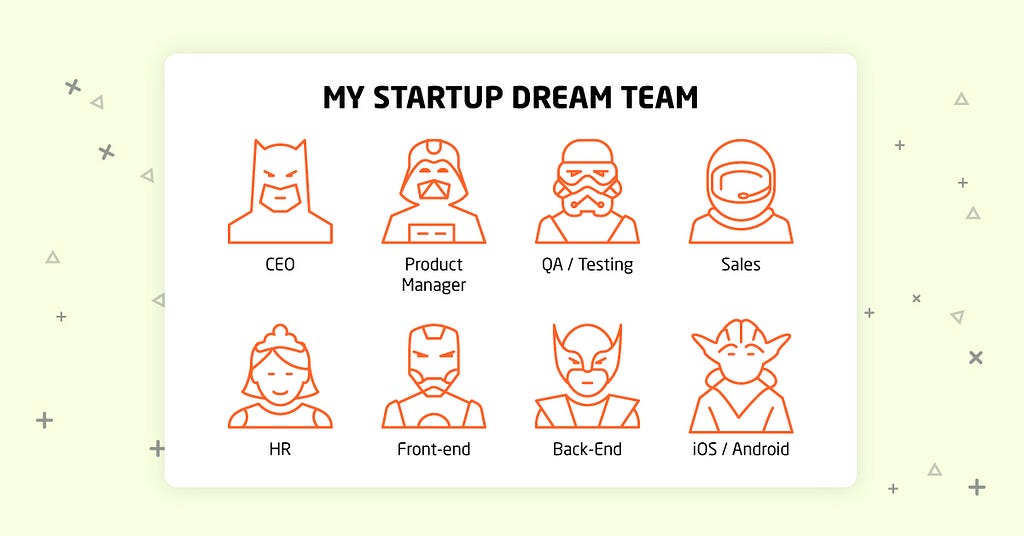Latest news about Bitcoin and all cryptocurrencies. Your daily crypto news habit.
One of the most disturbing and important questions each startup has to answer is how to build a great in-house team of developers. We explain the way it works for us and our customers.
The best way to create a good product is by hiring a good team for the job, obviously. However, gathering a good team and making sure they work well with each other is a long and time-consuming process. Losing time is not a luxury a startup can allow, so minimizing the time needed to build a great in-house software development team should be a priority.
Over the course of the few previous articles, we explained the differences between working with a dedicated and an in-house team of software developers, the benefits of opting for the dedicated team route, and the peculiarities of hiring a reliable dedicated software development team. It’s time to explain how we (and our customers) assemble great teams of top-notch talents when they launch their first successful projects. When launching all the next ones, they already have the team at hand, obviously.
Step 1: It takes an expert to hire an expert
While you might have a clear understanding of the real world problem your startup product will solve, you are not expected to be a one-man orchestra who knows the front-end development, the back-end development, the QA and testing, the mobile app development for iOS/Android and all the rest of the software delivery pipeline parts. Thus said, you need to find an expert.
Experts in any field have to keep their visibility up. They are present and active on various social media groups, Reddit, Quora, Stack Overflow and other websites. Look for the community members with the biggest authority/ karma/ number of likes, etc. who are related to the field of your interest. Such people are often the participants or even keynote speakers at various conferences, meetups, and other events.
You can address them online or while attending said events and ask for their help or consultation. They might ignore the inquiry, of course, yet the risk of public divulgation of such actions and the possible damage to their reputation will most likely prevent such course of actions. They will quite often either direct you to a suitable candidate or might even apply for the job themselves. Most importantly, they will clarify the potential project requirements and give estimates of the required technology stack and team structure, as well as providing invaluable background for evaluating the skills of your potential employees.
Step 2: Test a lot, and we do not talk about the software
You need to make sure your future team leads are A-grade specialists, not C-grade staff. Highly-skilled professionals are aware of their strengths and weaknesses and not afraid of hard tasks or in-team competition. In addition, they will be able to correctly assess the task complexity and delegate appropriate parts to appropriate executants.
Ask the experts to create the tests to assess the candidates’ skills. Make them technically hard, as you are looking at your future Team Leads and want battle-hardened veterans, not rookies. This will efficiently help to shortlist 3–5 candidates for actual interviews while requiring really little effort on your end. All you need to do is select the person with best soft skills — a good communicator, a confident leader and a diligent executant who will be able to oversee the team efficiently.
Step 3: Form the team and begin working
If the future product of your startup is not too complex, hiring 1 of each needed specialists would be enough to form the backbone of the team. Should the project be challenging, you will need to spend some more time hiring the underlings to add more muscle. Keep in mind, A-grade team leads tend to hire A or B-grade executants, which is good for your project overall. Repeat the steps 2–3 until you feel confident the team you built is able to deal with the job at hand.
It seems we are all set and ready to go, isn’t it? However, there are certain obvious complications we mentioned when describing the differences between hiring a dedicated team of software developers and building such a team from scratch in-house. The difficulties include (but are not limited to) the necessity to pay wages from the day one, the fact that the product cannot be completed if some specialist is not hired yet and the risk to slow or stop the overall progress should any of the team members decide to quit.
The solution to these complications was also described in the aforementioned article. Opt for hiring a dedicated software development team from an MSP to create a product for you. Once either the product starts generating revenues, or the next round of investments arrives, you can begin building your own team of software developers and gradually replacing the hired muscles with in-house talents.
Final thoughts on how to build a great in-house team of developers
When your in-house personnel joins the work in progress it is easier for them to grasp the current stage of development by exploring the developer’s documentation and replace the contractor’s staff. Due to flexible outstaffing schemes many MSPs like IT Svit can help with the smooth transition of the product from their care to your team and provide backup and replacements should the need arise, not to mention training your team to use the existing systems and infrastructure with the utmost efficiency.
Thus said, we are firmly sure that with time every startup is able to build an in-house software development team to support and evolve their product. It’s developing the MVP that is slightly problematic if you don’t have a team at the ready. That’s where hiring a dedicated team of software developers will be extremely helpful.
We hope this article inspired some thinking and would be glad to know your opinion on the best ways to build a great in-house team of developers. Did you use the similar tactics or have a different know-how to build such teams? Please let us know in the comments below!
Initially, this story was posted on my company’s blog — https://itsvit.com/blog/build-great-house-team-developers/
How to build a great in-house team of developers was originally published in Hacker Noon on Medium, where people are continuing the conversation by highlighting and responding to this story.
Disclaimer
The views and opinions expressed in this article are solely those of the authors and do not reflect the views of Bitcoin Insider. Every investment and trading move involves risk - this is especially true for cryptocurrencies given their volatility. We strongly advise our readers to conduct their own research when making a decision.




